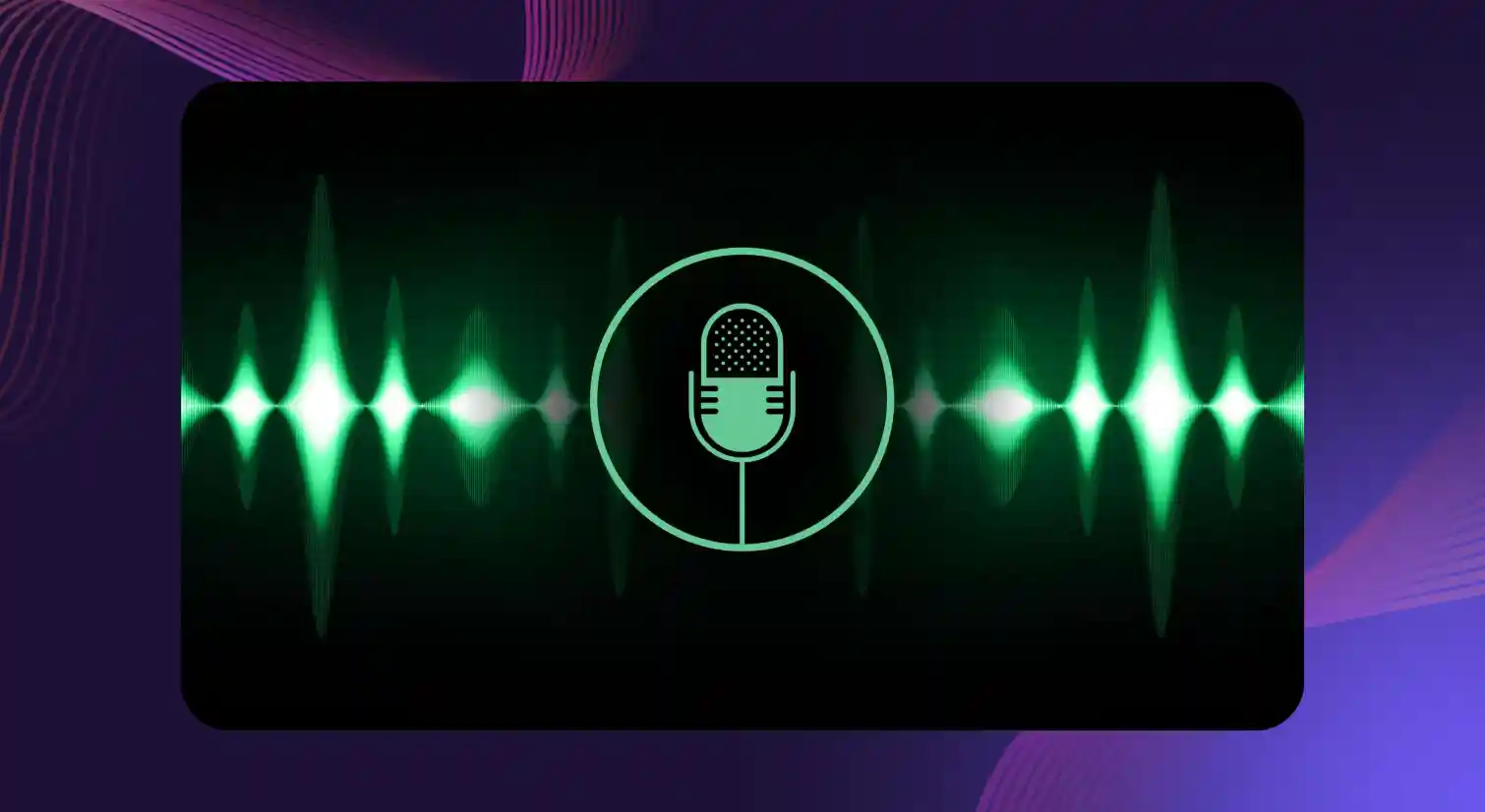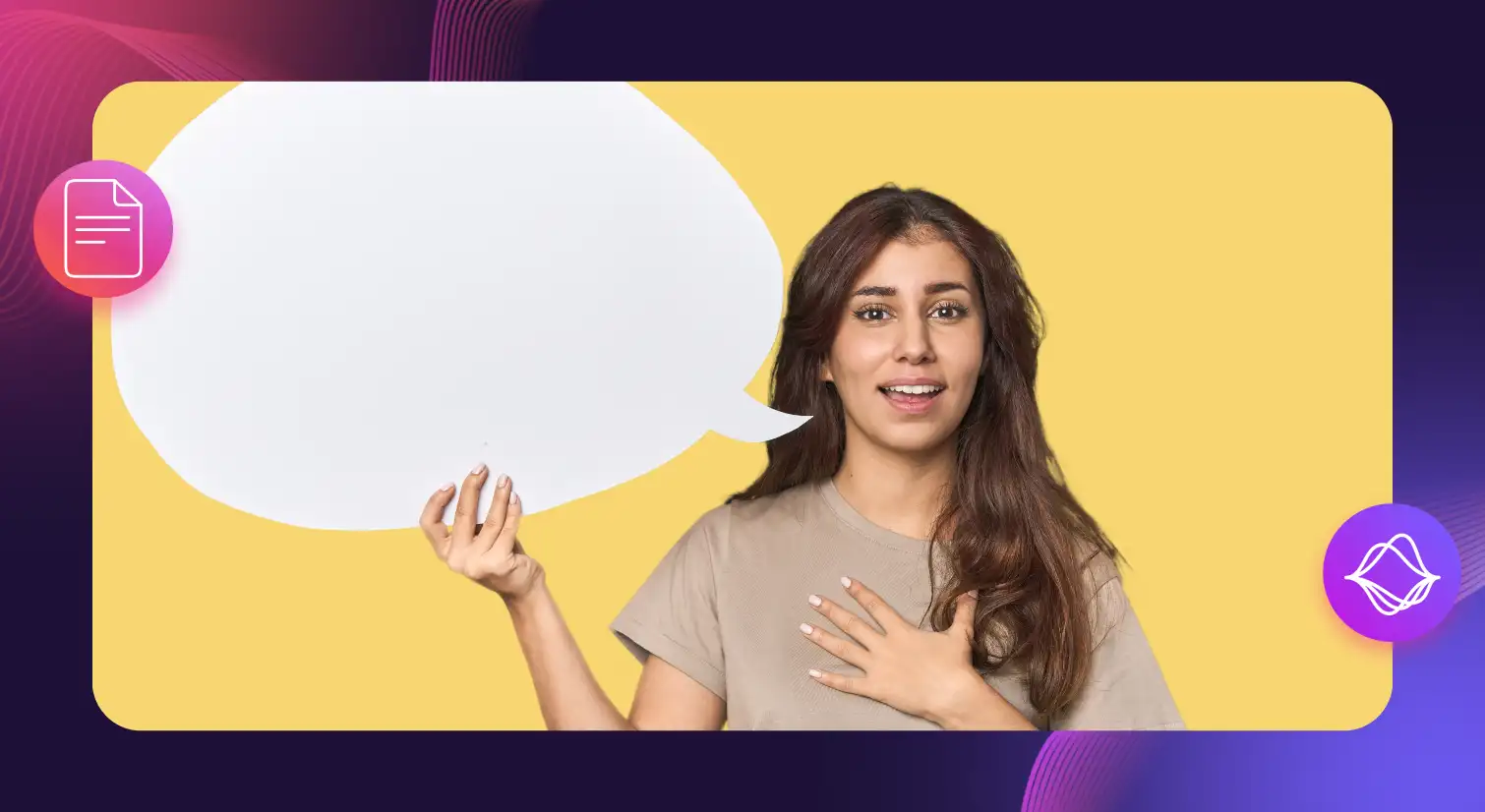Understanding Speech to Text in Depth

Have you ever transcribed an interview before? Or seen an individual with disabilities use voice recognition software to control their devices and create text using their voice commands?
If yes, then you have directly experienced the impact of speech to text technology. Better known as STT, these tools help convert audio into written text. It works with a combination of artificial intelligence, deep learning, and computational linguistics.
To give you another real-life example of speech to text, YouTube features a ‘Closed Captions’ option that enables the live transcription of the dialogue happening on the video in real-time.
There are several use cases where voice to text comes in handy, including the dictation processes during meetings, transcribing important interviews, and much more.
In this blog, we’ll go through the evolution of speech to text, benefits, applications, and what the future of the technology looks like.
Evolution of Speech to Text
Speech recognition has always been under constant improvement since the 1950s. In fact, Bell Laboratories pioneered the world’s first speech recognition setup called AUDREY, which could recognize spoken numbers with almost 99% accuracy. However, the system was too bulky and consumed copious amounts of power.
In 1962, IBM innovated the niche with Shoebox, a speech recognition system that was able to recognize both numbers and simple mathematical terms. On a parallel timeline, the Japanese scientists were hard at work creating phoneme-based speech recognition technologies and speech segmenters.
This was when Kyoto University achieved a breakthrough in speech segmentation, allowing computers to ‘Segment' one sentence into a new line of speech for the subsequent tech to work on sound identification.
It wasn’t until HARPY from Carnegie Mellon came around in the 1970s that computers could recognize sentences from just over a 1,000-word vocabulary. The system was the first to use Hidden Markov Models, a probabilistic method that laid the foundation for the modern-day ASR.
The 1980s saw the first speech to text tool that leveraged IBM’s transcription system, Tangora. These tools were viable and usable and would then be polished to become the modern-day speech recognition software.
Need for Speech to Text
The fact that people around the world needed to generate transcripts at scale and fast led to the development of speech to text software.
Today, their use has expanded into other utilities as well, serving to provide live translations of language and aiding people with disabilities to participate in the online world equitably.
The speech to text process can be explained in five simple steps:
- Vibration analysis: When a person speaks, the voice vibrations are first analyzed by STT software.
- Phoneme identification: The software then identifies the phonemes in the input sound.
- Phoneme-sentence correlation: The identified phonemes are then run through a mathematical algorithm to create sentences.
- Linguistic algorithmic conversions: The phonemes are put together to form words and put into coherent sentences.
- Output in the form of Unicode characters: The words are now displayed as Unicode characters.
Benefits of Speech to Text
Speech to text provides tremendous advantages to users:
1. Enhanced Accessibility Through Speech Recognition
Speech to text is an exemplary accessibility tool for people with mobility or visual disabilities to express themselves. Spoken language can be converted into text automatically, allowing them to take part in threads and discussions on, say, social media platforms.
2. Improved Productivity
Speech to text is also an excellent tool to use for enhancing productivity at work that involves exhaustive transcribing processes. The entire workflow can be automated to convert audio to text, clean the text, and then push it further for translation or proofreading.
3. Hands-Free Operation Through Spoken Words
Hands-free keyboard operation is another productivity enhancement that speech to text provides to users. Professionals can leave their desks and dictate meeting notes or instructions or type a letter using speech to text on popular software like MS Word.
4. Multitasking Through Voice Commands
Speech to text allows users to tackle multiple tasks at the same time. For example, while using STT tools for dictating onboarding instructions for a new hire, a professional can continue to read through the files that have been closed or need to be handed over.
5. Language Support Through Google Speech Recognition
Speech to text enables professionals to type in another language using speech. There are tools that take input speech recognition in one language and output the text in a different language selected by the user. It helps prevent errors in sensitive documents for international businesses.
Future of Speech to Text
In the near future, innovations in speech to text would unravel the improved potential of the technology across a variety of use cases:
1. Multilingual and Cross-Language Capabilities
Polyglot capabilities are set to emerge with speech to text tools promptly converting one language into written text in a second language. In the next step, the typed text in L2 can be converted into spoken audio again, achieving cross-language capabilities.
2. Enhanced Customization and Personalization
Currently, speech to text technologies feature a wide range of voice and language selections. In the future, there is potential to offer better voice modulation, auto punctuation, and customization capabilities to users for enhanced branding and user experience.
2. Integration with Virtual and Augmented Reality
Speech to text can be extensively employed in VR and AR modules for simulating conversations with AI assistants or agents. It can prove to be a highly effective tool for corporate training, skill-building, and scenario simulations.
3. Expanded Use in Healthcare
Speech to text has the potential to provide enhanced functionality to administrative tasking in the healthcare sector. It can help doctors quickly and efficiently provide prescriptions to patients and also help medical researchers take notes on a subject as they continue to study.
4. Incorporation into Smart Assistants and IoT Devices
Speech to text is already finding expanded utility in voice assistants that work by recognizing speech and following through with voice commands. This capability can be further expanded into IoT beyond domestic use into specialized operations as well (like industrial operations).
Does Murf Have a Speech to Text?
Murf Studio is primarily a versatile platform that provides high-quality AI voices for text to speech conversions. While the platform doesn’t offer a standalone speech to text module, users can still convert audio to script using Murf’s AI voice changer feature through the following steps:
- Login to the Murf Studio dashboard and select AI voice changer from the left sidebar.

- Select a recorded audio or video to upload to the platform.

- Select the language that your audio file is recorded in.

- Once you see the transcribed text appear on the dashboard from your audio, you can proceed to download the text script from the interface. If required, you can apply customizations to the text here as well.

- Click on the context menu option beside the text script and select “Download Script.”

Murf Studio allows you to download the text script in a variety of formats. You can also translate the script into 20+ languages available on the platform.
Speech to Text: More Than Just an Accessibility Enhancer
Speech to text tools are a boon for people who require tasking assistance. However, these tools can do more than just assistive tasks. Professionals actively employ STT to achieve higher levels of productivity at work; people also use it in their daily lives to interact with voice assistants.
Speech to text tools have become extremely accessible today, with advanced online platforms available aplenty. The simplicity in ease of use and quick transcriptions they provide have made it more inclusive for the populace.

Frequently Asked Questions
What is STT technology, and how does it work?
.svg)
Speech to text tools convert spoken words into text. They work by identifying sounds in a recording and converting them into corresponding text.
How accurate is speech to text?
.svg)
Modern-day speech to text tools are extremely accurate as they work with expanded voice databases that allow for accurate transcriptions.
What are the objectives of speech to text?
.svg)
Speech to text is purposed to convert spoken words and phrases into typed text with a view to enhance accessibility and productivity.
How is AI used in speech to text?
.svg)
AI enables predictive and voice typing when using dictation methods on software like MS Word.
What applications use speech to text technology?
.svg)
Daily-use electronics like Amazon’s Alexa or the voice assistants on your phone use speech to text technology.
Can speech to text handle multiple languages?
.svg)
Yes, speech to text software can convert between languages once a text transcript is available.
How secure is speech to text technology?
.svg)
Depending on the software you select, the degree of security varies in STT.
Can speech to text technology be used for real-time transcription?
.svg)
Yes, YouTube and other video platforms leverage STT for real-time caption generation.















